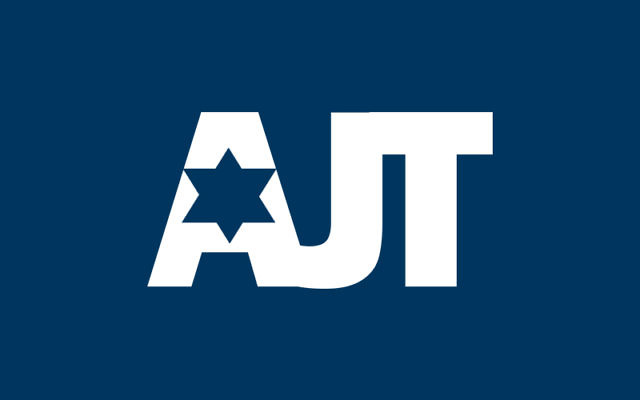Saying ‘I Was Wrong’
/RACHEL LAVICTOIRE/ //AJT CONTRIBUTOR// Rachel LaVictoire
“I was wrong.” I would assume that next to “I love you,” these are probably the hardest three words for anyone to say.
Why? Because, for whatever reason, regardless of how untrue it is, we all like to think that we’re flawless. Admitting a wrongdoing often makes us feel weak, inferior, and sometimes just flat out stupid. But as we see this week, and throughout our reading of the Torah, being forthcoming with your mistakes and apologizing for them, is a value that’s deeply embedded in the heart of Jewish teachings.
This week, we read Vayakhel, the finale of an extremely important succession of readings that began in the last week of January (coincidentally, also the last week of Shevat).
Throughout these readings, which included Terumah, Tetzaveh, Ki Tisa, and Vyakhel, we’ve read the following: G-d instructed Moses to build the Sanctuary (Exodus 25-31), the Israelites committed the Sin of the Golden Calf but then earned G-d’s forgiveness (Exodus 32-34), the people gathered and donated the materials necessary to build the Sanctuary (Exodus 35), and finally construction of the Sanctuary began (36-38:20).
Jewish practice, however, does not assume that the Torah is relayed to its readers in chronological order. In fact, this particular series of events has been the focus of many ancient scholars. From much discussion and interpretation came three proposed ideas: the first two come from the ancient scholars Nachmanides (1194- 1270) and Rashi (1040-1105), and the third comes from the Zohar, the primary text for the study of Kabbalah. I made this little chart as an attempt to organize the differences in the three most popular theories. These three dissimilar chronologies provide three different interpretations on what exactly the Sanctuary symbolized and how Judaism views forgiveness:
In the case of the Zohar, everything is simple. G-d commanded tzaddikim, perfectly righteous people to build Him a home. The materials, too, were pure and untainted because they were collected at a time when the Israelites had not yet worshiped a false god.
In addition, the Talmud claims that following the sin of the Golden Calf, the Israelites were born anew and therefore returned to their state of purity, so the building of the Mishkan (Sanctuary) was quite simply a mitzvah commanded by G-d and carried out by righteous Israelites.
Rashi’s explanation exploits the significance of repentance in Judaism. His proposed chronology says that the instructions to build the Sanctuary were given on Yom Kippur, the Day of Atonement.
In this scenario, G-d was not commanding tzaddikim, but rather baalei teshuvah (“returnees”)—those who had done wrong, but had repented and proven a true return to their G-d Almighty. Here, the Sanctuary serves only as a symbol of the Israelites’ reestablished devotion to G-d— there would not have been a need to build it had the sin of the Golden Calf not occurred.
Finally, Nachmanides’ timeline of events elicits and entirely different message. While the other two explanations suggest that the instruction to build and the donation of materials happened together, either before or after the sin of the Golden Calf, Nachmanides explores the possibility that the sin in fact interrupted the instructions and donations.
For the sake of this interpretation, it’s important to note that the command to build the Sanctuary never changed—it wasn’t edited or given with stipulations, even after the sin of the Golden Calf. Therefore, Nachmanides is proposing that the Sanctuary can in fact be built by a nation of resha’im, sinners.
The task of building the Sanctuary is one, we might assume, that should be left to a certain group of “worthy” individuals.
After all, building a physical house on earth for the one and only G-d seems like a righteous task. While in fact, it’s true that the task itself is highly regarded and vitally important, this series of timelines and interpretations is claiming that everyone is worthy—the righteous, the returnees, and even the sinners.
Now, I won’t go on to equate my mistake with the sin of the Golden Calf, but those of you who read my articles consistently are well aware that I committed a writing “sin” a couple weeks ago.
I acted naively. In a rush to finish my writing for the day, I skimped out on credible research and ended up making claims about real-world issues that were entirely untrue. I upset some, and angered even more.
I, as hard as it was to say, was wrong. I hope that you all do continue to read and enjoy these pieces; and that this week, maybe, you learned a little about some Jewish scholars, and a little about forgiveness.
Rachel LaVictoire (rlavictoire@wustl.edu) is a graduate of the Davis Academy and Westminster High School, recipient of the prestigious Nemerov Writing and Thomas H. Elliott Merit scholarships at Washington University of St. Louis and an active member of Temple Emanu-El and the Marcus Jewish Community Center of Atlanta. She was recently named to the board of St. Louis Hillel.




comments